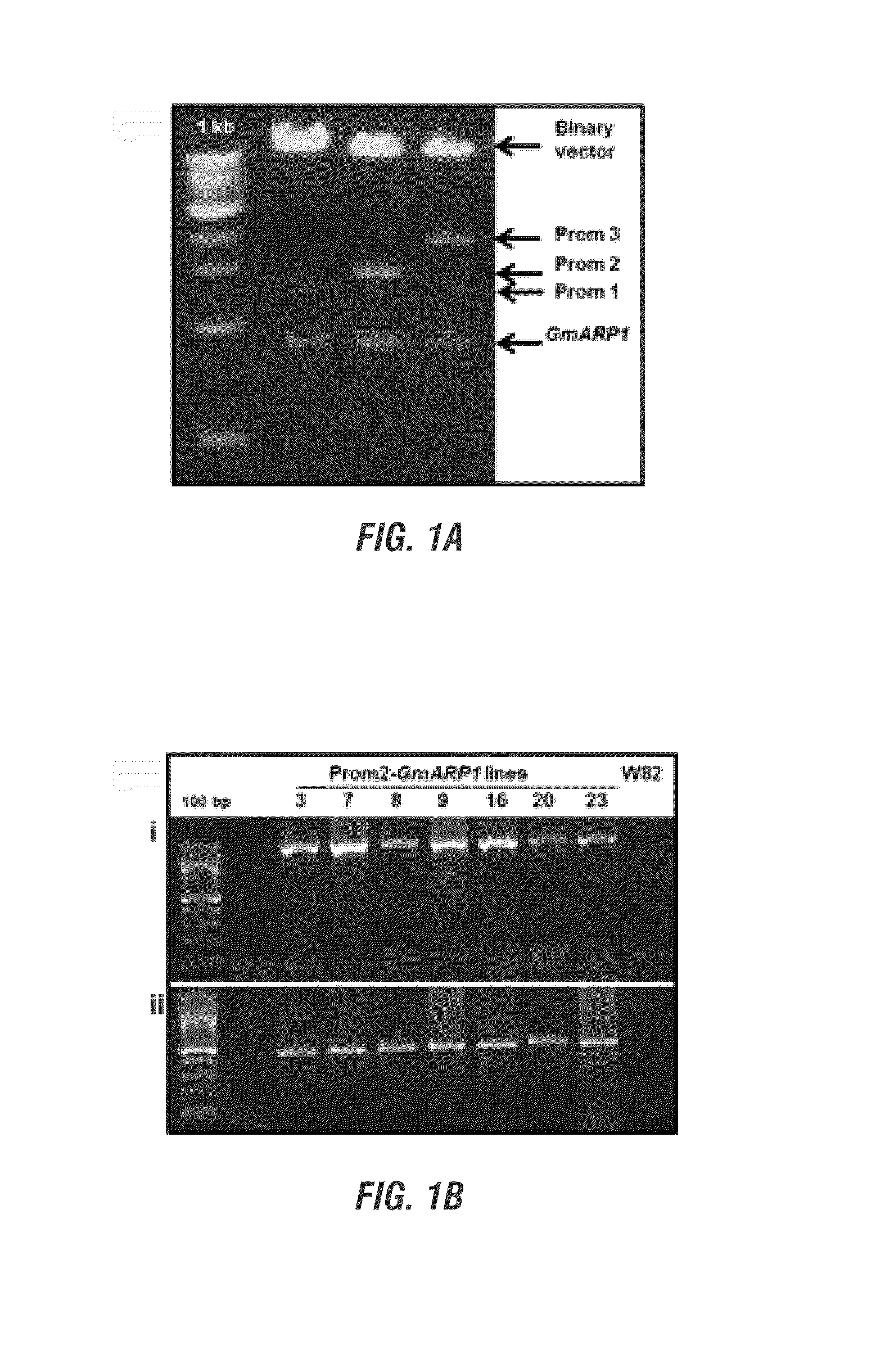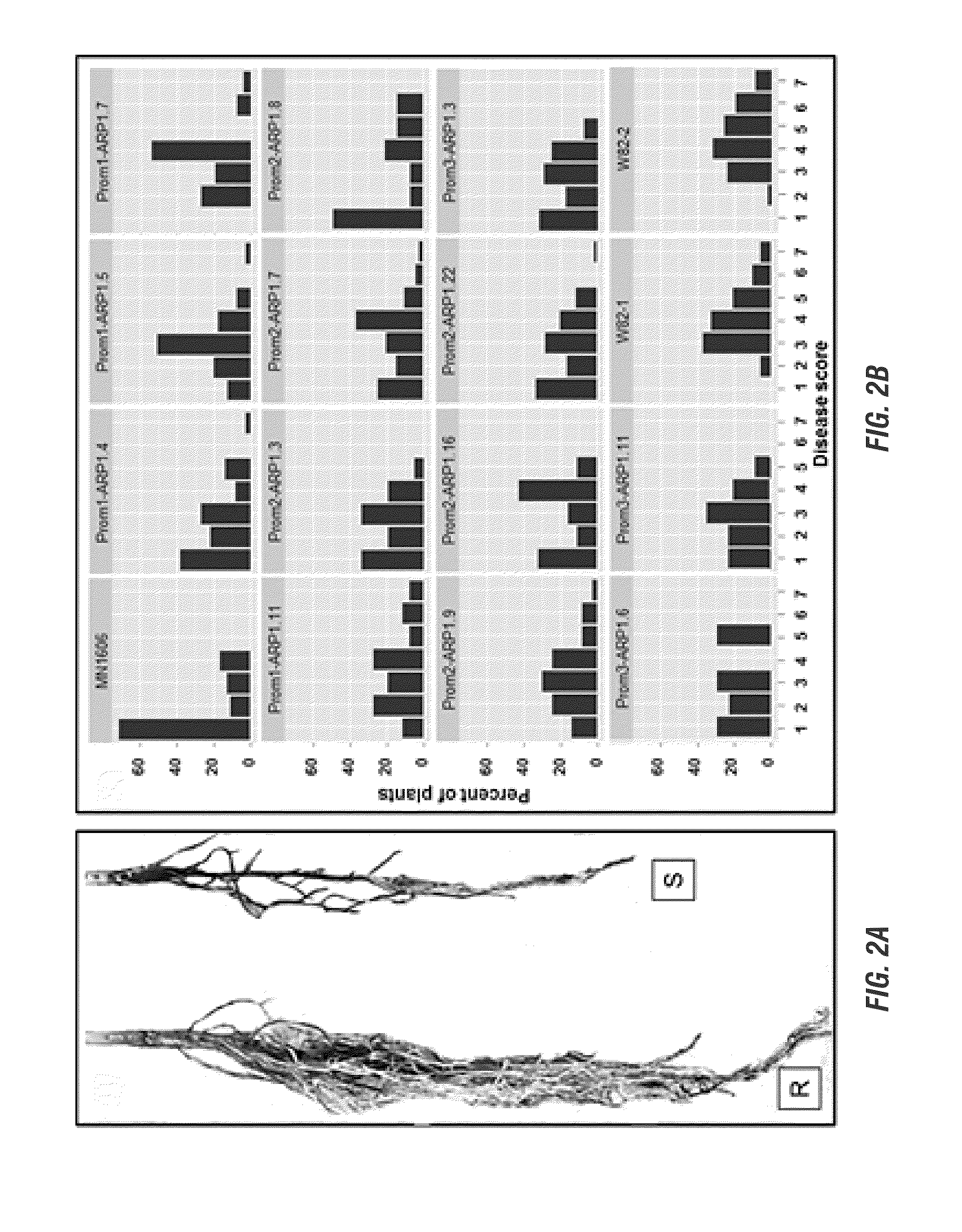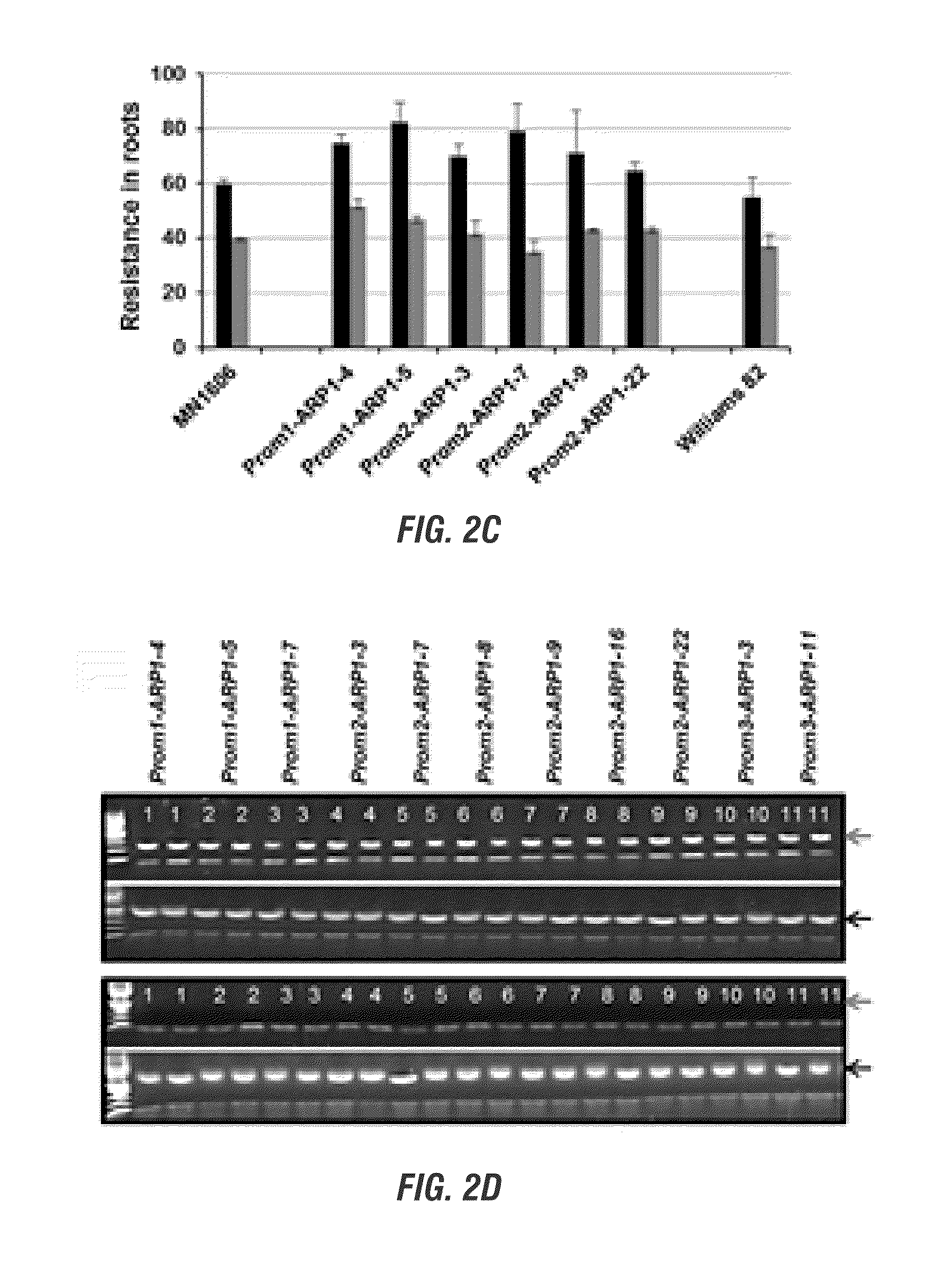Glycine max resistance gene(s) and use thereof to engineer plants with broad-spectrum resistance to fungal pathogens and pests
a technology of glycine max and resistance gene, applied in the field of plant genetics, can solve the problems of soybean production problems, uneconomical and environmentally unsound use of fungicides as a control measure in soybean production, and the loss of soybean total crop
- Summary
- Abstract
- Description
- Claims
- Application Information
AI Technical Summary
Benefits of technology
Problems solved by technology
Method used
Image
Examples
example 1
Development of Novel Soybean Germplasm for Improving Soybean for SDS Resistance
[0191]In this project we choose to express several soybean and F. virguliforme genes in transgenic soybean plants to determine if expression of any of these genes enhances resistance to the SDS pathogen. The genes were selected based on their possible role in disease resistance. Following infection of soybean with the SDS pathogen F. virguliforme, the selected genes are rapidly silenced. Presumably pathogen silenced the expression of these candidate defense genes so that it can infect soybean. We proposed to alter the promoters of four selected soybean genes so that they will be induced during infection and confer resistance against the SDS pathogen. In addition, we also considered expressing a F. virguliforme gene to determine if it plays any role in the expression SDS resistance. We proposed to conduct following three objectives to accomplish the goal of this project.[0192]1) Express at least one member...
example 2
[0216]
>Glyma12g12470.1:peptideMKKLKNTQFS SQQGAAASQP RPLLHKELVG EKKVMNSEFNEAVEKGDMDN FVNVLEQVCR ERNLPLSAVF DQVTWTGDSLLHVAADKGKQ HIVELIADHF QELLIRRNAR GDTALHVAVRSMNSNIVKFI LNKDKKLAKE KNQYGNTPLH EAVYSEHVDVVNQILLADKD VVHSLNKSNQ SPLYLAVANG NLEILNLLLDLYANLNYKIV LEIQNLS*Glyma12g12470.1:cdsatgaagaaac tgaagaacac acaattctca agtcaacaaggtgcagcagc ttcacaaccg agaccactgc tgcacaaggaacttgttggg gagaaaaaag ttatgaattc tgagtttaatgaagctgttg aaaaaggaga tatggataac tttgttaacgtgttggagca agtttgtaga gaaaggaacc tacctttgtctgctgttttt gatcaagtca cctggactgg tgattcgttgcttcatgtgg cagcagataa ggggaaacaa catattgtagagctgattgc tgatcacttt caagagcttc ttattagaagaaacgctaga ggtgatactg cacttcatgt tgctgtgaggtctatgaact ccaatatagt caagttcatt ctcaacaaagataaaaagct agcaaaagaa aagaatcaat atgggaacactcctttgcac gaggctgtct acagtgagca tgttgatgtggttaatcaga ttttacttgc cgataaggat gtggttcattctttgaacaa gtcaaaccaa tcaccgttat atttggcagttgcgaatggg aacttggaaa ttcttaatct tctattggatttatatgcaa acctaaacta taagatagta ttagagattcagaatctatc ttaaGlyma12g124...
PUM
| Property | Measurement | Unit |
|---|---|---|
| temperature | aaaaa | aaaaa |
| temperature | aaaaa | aaaaa |
| pH | aaaaa | aaaaa |
Abstract
Description
Claims
Application Information
 Login to View More
Login to View More - R&D
- Intellectual Property
- Life Sciences
- Materials
- Tech Scout
- Unparalleled Data Quality
- Higher Quality Content
- 60% Fewer Hallucinations
Browse by: Latest US Patents, China's latest patents, Technical Efficacy Thesaurus, Application Domain, Technology Topic, Popular Technical Reports.
© 2025 PatSnap. All rights reserved.Legal|Privacy policy|Modern Slavery Act Transparency Statement|Sitemap|About US| Contact US: help@patsnap.com



